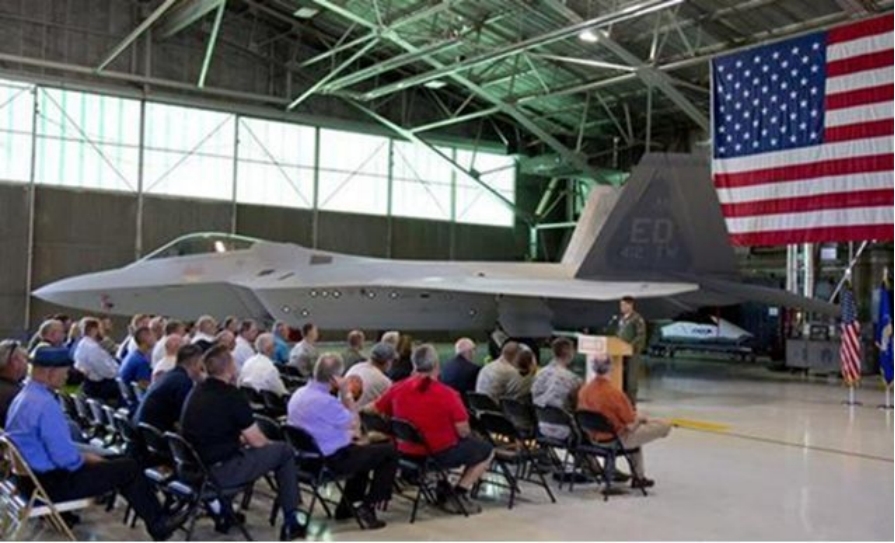
Amid rapid advances in military technology, the U.S. Air Force is facing a major decision: whether to deploy an expensive new manned sixth-generation stealth fighter as part of its Next Generation Air Superiority (NGAD) system family. This decision is not only related to the future combat effectiveness of the Air Force, but also involves the direction and strategic deployment of the entire military technology. In a recent speech at the Center for Strategic and International Studies (CSIS), Air Force Secretary Frank Kendall revealed more details about the NGAD fighter's original planned replacement, causing widespread concern in the technology and military circles.
In his speech, Kendall mentioned that the Air Force's original requirements for the NGAD fighter were to replace the F-22, a direction that has been the focus of efforts over the past several years. However, with an in-depth review of the NGAD program, the Air Force began to reconsider this decision. At the heart of the review is whether to continue down the F-22 replacement path or explore more economical, versatile alternatives.
One alternative is to develop a fighter that looks more like the F-35's successor, which would be cheaper, designed to be multi-role, and focused on acting as a manager for the Collaborative Fighter (CCA). This shift in design thinking is actually a search for a fighter that is more economical, flexible and able to adapt to the demands of the future battlefield. Another option, meanwhile, focuses more on long-range strike capabilities, reflecting in part a rethinking of the Air Force's concept of future air superiority.
From a scientific and technological point of view, the enhancement of long-range strike capability is undoubtedly a trend worth paying attention to. With the development of missile technology and the wide application of UAVS, long-range strike has become an important means in modern war. For the US Air Force, having a strong long-range strike capability means being able to kill the enemy at a longer distance, reducing its own risk and improving operational efficiency.
However, the increase in long-range strike capability is not without challenges. First, long-range strikes require high-precision guidance systems and strong fire support, which requires fighters to have advanced sensors and weapon systems. Second, long-range strikes also require good communication and command and control capabilities to ensure coordination between fighters and other combat units such as drones. The development and integration of these technologies will undoubtedly increase the cost and complexity of fighter aircraft.
At the same time, the proposed low-cost design is also a response strategy for the Air Force in the face of budget pressure. In the context of the current global military budget austerity, how to achieve higher combat effectiveness at a lower cost has become a common problem faced by militaries of all countries. For the US Air Force, the development of a low-cost, multi-role fighter can not only reduce budget pressure, but also improve the number of equipment procurement and deployment speed, thereby enhancing the overall combat effectiveness.
However, low cost design does not mean sacrificing performance. Instead, it requires designers to reduce costs by optimizing structures and adopting new materials and technologies while maintaining the necessary performance. This requires the Air Force to conduct deeper technical analysis and innovation in the development process to ensure that low-cost design does not become a barrier to combat effectiveness.
In Kendall's speech, he also mentioned the possibility that the B-21 Raider stealth bomber could take on more roles and missions. The B-21's potential value as a stealth bomber with multiple capabilities, including long-range strike, battle management, and intelligence, surveillance, and reconnaissance (ISR), cannot be overlooked. Especially when it comes to supporting air-to-air combat, the B-21's long range, high-altitude ascent, and low observability (stealth) make it likely to be an important part of future air superiority.
In addition, the B-21 can serve as an aerial nerve center to support anti-air missions, especially for controlling combat units such as drones. This capability will be of great strategic value in future battlefields, as it enables remote command and control of unmanned combat units, thereby increasing overall operational effectiveness.
However, it is worth noting that whether it is the enhancement of long-range strike capability or the proposal of low-cost design, it is necessary to find a balance between technical feasibility and operational requirements. This requires the Air Force to conduct adequate technical analysis and operational simulation during the development process to ensure that the selected solution can truly meet the needs of the future battlefield.
In addition, there are many other factors that need to be considered for the final decision on the NGAD fighter program. For example, the development of new concepts, technologies and procedures for operations and tactics using CCA, as well as the progress of the development of new stealth aerial refueling aircraft. These factors will have an important impact on the final direction of the NGAD fighter program.
On the budget front, Kendall made clear his concerns about the cost of the NGAD fighter. He noted that it is difficult to see how the Air Force can afford such an expensive program at current budget levels. This requires the Air Force to conduct more careful budget analysis and resource allocation in the decision-making process to ensure that the chosen option can be economically viable.
To sum up, the choice the U.S. Air Force faces on the NGAD fighter program is actually a profound reflection on the future direction of air superiority concept and technology development. From a scientific and technological point of view, the enhancement of long-range strike capability and the proposal of low-cost design are trends worthy of attention and exploration. However, the realization of these trends requires overcoming a range of technical challenges and budget pressures, requiring adequate technical analysis and innovation in the Air Force's research and development process.
Regardless of which option is ultimately chosen, the Air Force will need to remain perceptive and innovative about new technologies and concepts as it moves forward. Only in this way can we ensure its leading position and combat effectiveness in the future battlefield. At the same time, this choice will also have an important impact and inspiration for other countries' militaries, and promote the sustainable development and reform of global military science and technology.

Since 2022, the Fed has cumulatively reduced its balance sheet by $2.4 trillion through quantitative tightening (QT) policies, leading to a near depletion of liquidity in the financial system.
Since 2022, the Fed has cumulatively reduced its balance sh…
On December 11 local time, the White House once again spoke…
Fiji recently launched its first green finance classificati…
Recently, the European Commission fined Musk's X platform (…
At the end of 2025, the situation in the Caribbean suddenly…
The U.S. AI industry in 2025 is witnessing a feverish feast…